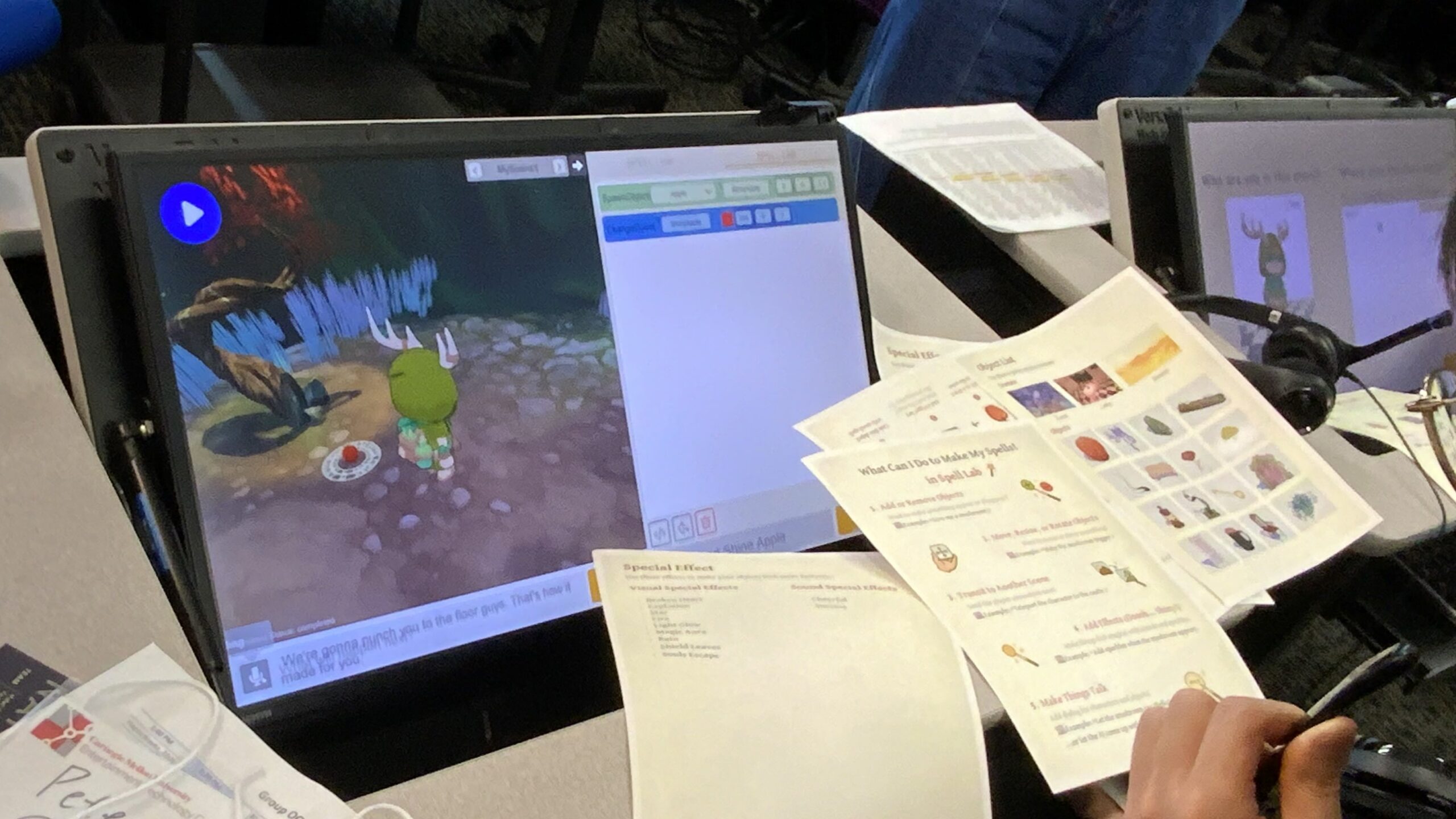Week 10 was all about making our project tangible for real users—kids, teachers, and families alike. Our team put some touches on UI features, asset integration, and structure for Playtest Day.
What We Did This Week
Tool UI + Spell Lab Expansion
Jinyi introduced character and scene selection and a revamped UI for what we’re now calling Spell Lab. These changes were aimed at making the experience more intuitive and giving players more creative freedom. Yifan also made some new designs in the Spell Link, where the connection from interaction to code became more natural.
Scene Art Assets
Jia implemented five visual assets per scene, ensuring that environments felt distinct and provided a foundation for players to build stories.
Spell Book
Wendy iterated on the Spell Book, which we decided to have as a guide to use the tool. Since we are not designing an in-tool tutorial, having a paper reference will be helpful to use the tool.
Playtest Structure
Eva organized the flow of Playtest Day, drafting clear notes and guidelines for each team role. This helped the playtest run smoothly, making sure we could capture relevant observations and engage with users effectively.
What We Learned from the Playtest Day
Playtest Day is a time every semester when graduate student teams present their project builds for real-world feedback from guests. Playtesting is a valuable opportunity to see how games and experiences perform with users, revealing what works well and what needs refining.
Using this great opportunity, we got some valuable feedback and observation to help move to the next stage.
Kids Want to Play, Not Just Build
Most kids jumped into trying out AI prompts rather than planning a story. They are trying all the code AI could give them. While the idea was to guide them toward building an interactive narrative, they gravitated more toward exploration and experimentation.
Trouble Finding Spawned Objects
Many players struggled to locate the objects they generated, leading to confusion and disconnect. We’ll be exploring ways to make newly spawned items appear within the camera view or include a sound cue.
Confusion Around Controls
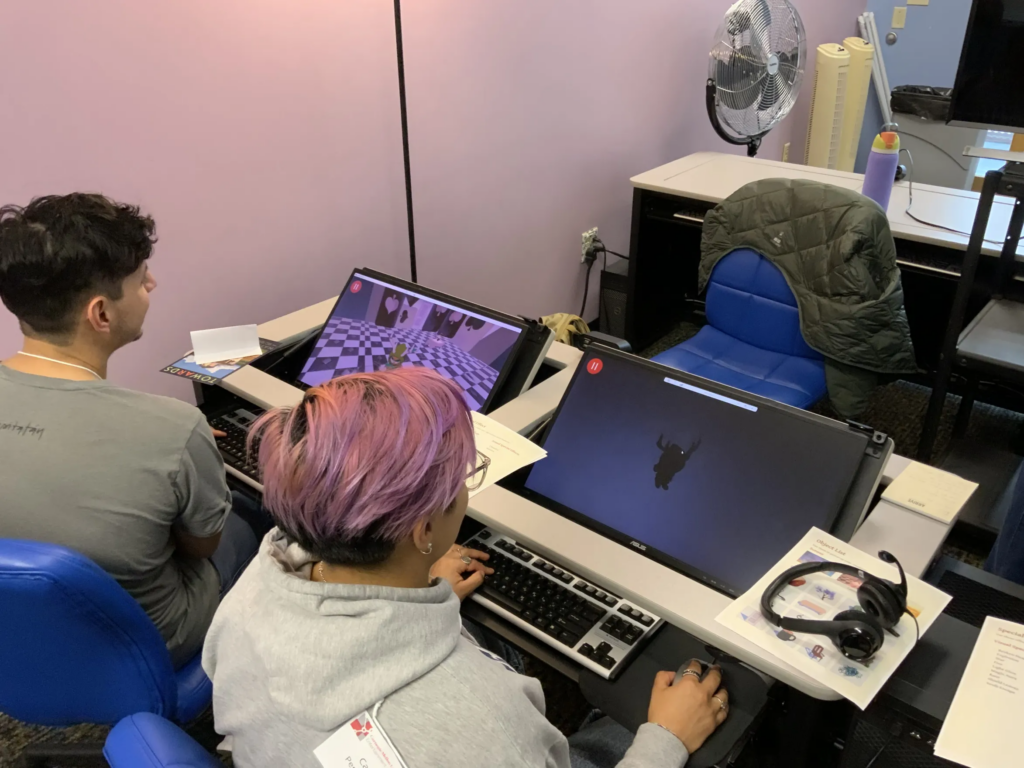
The “click-to-move” interaction wasn’t intuitive. Players didn’t realize they had to click on the scene first to move the character. We plan to add a visual cue or tutorial tip to resolve this.
Spell Book Underused
Unless prompted, most users ignored the spell book. This suggests we need to redesign how assets are introduced or add incentives for browsing it.
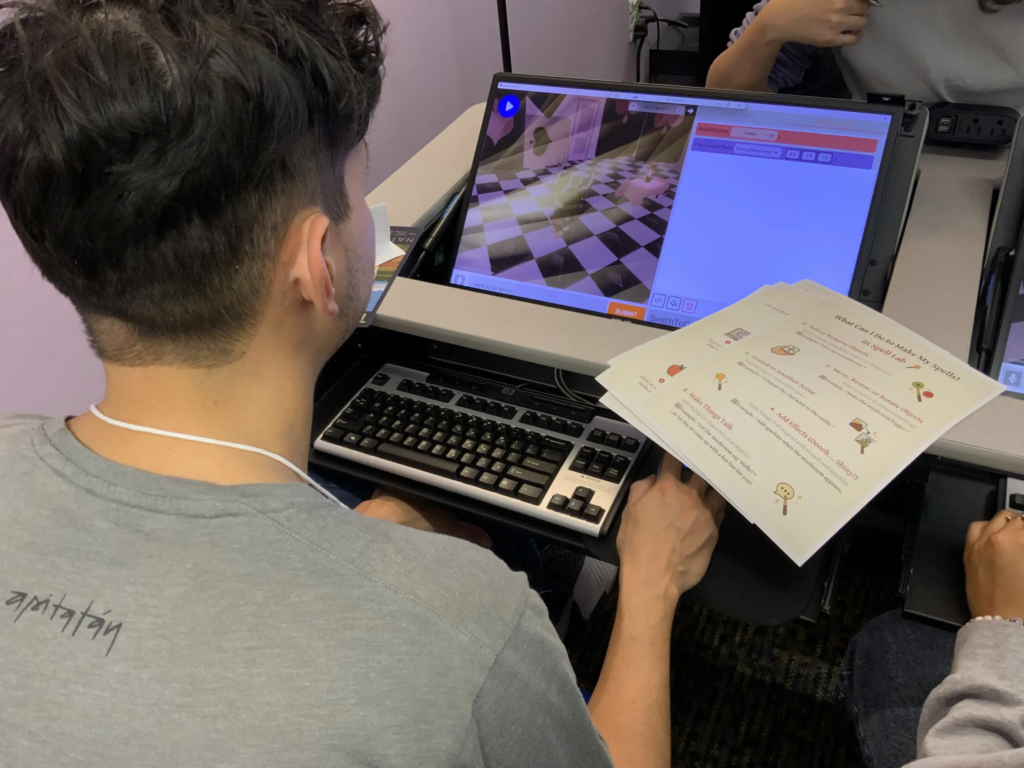
Assets & VFX as Inspiration
Visual effects (VFX) were a big hit. Kids loved playing with smoke, explosions, and other visuals. However, the current assets didn’t strongly inspire storytelling. One suggestion was to add characters or creatures with eyes or personality, to evoke more emotional connection.
AI as a Discovery Tool
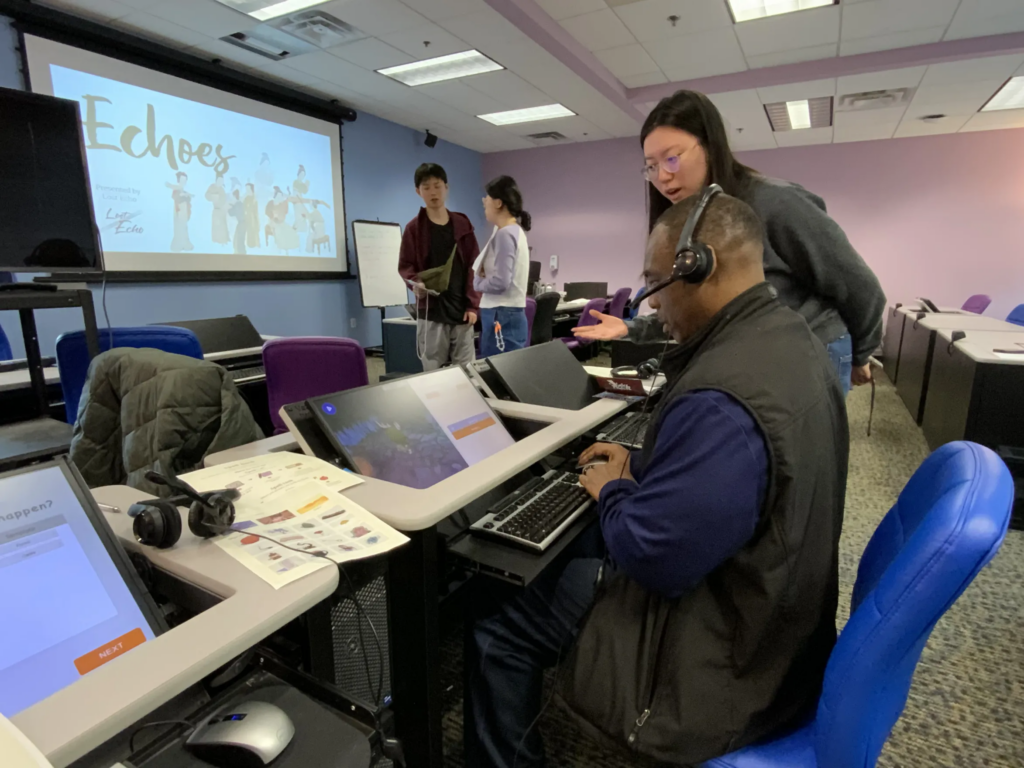
We saw strong engagement when students “broke” the tool—testing limits and inputting creative prompts. One kid even typed “Spawn Door” after learning the term from Minecraft! AI isn’t just a coding tool—it’s a gateway to curiosity.
Keyboard Typing is a Barrier
Kids aged 7–11 struggled with typing. Voice input could be a powerful accessibility upgrade, especially since many are more used to tablets than keyboards.
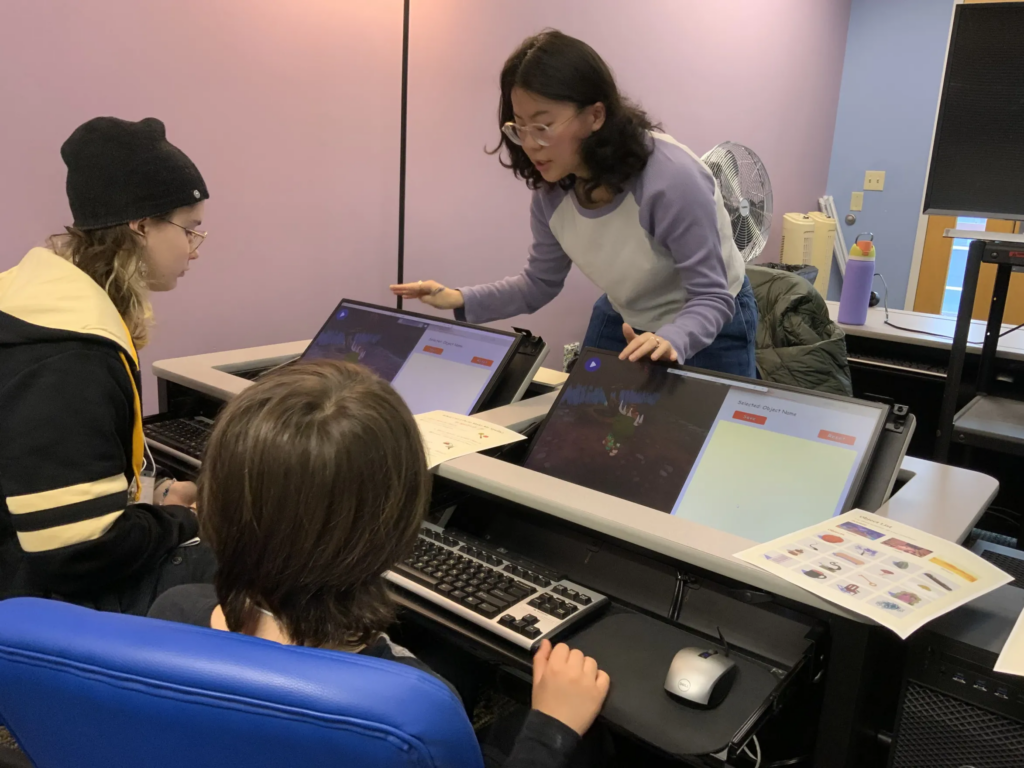
What’s Next?
Next up, we’re focused on tightening the user experience by fixing key bugs, improving clarity in character controls and object spawning, and expanding our asset library with more inspiring visuals. We’re also exploring better educational framing—like adding story-building templates and saving code history—to help players connect their creative ideas into meaningful, interactive stories.
